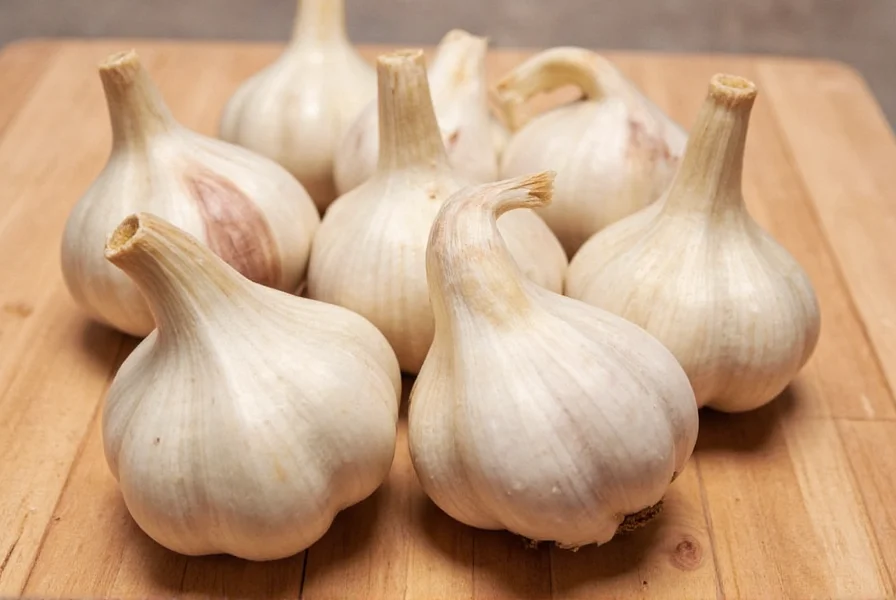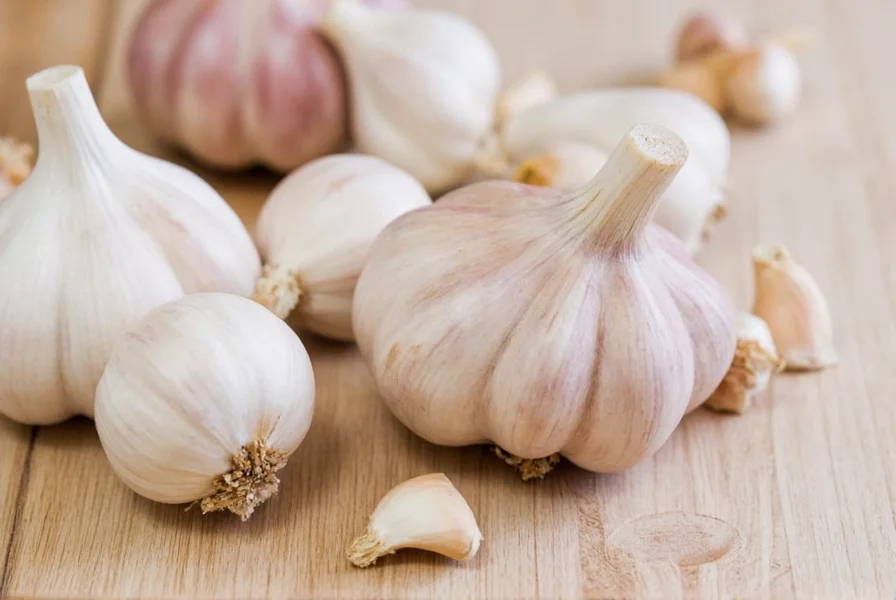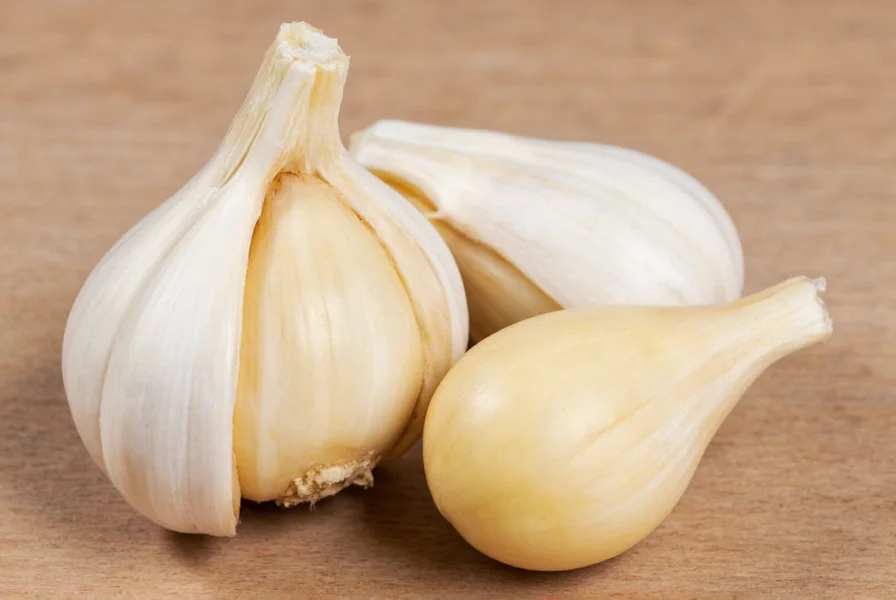Understanding garlic cloves is essential for precise cooking and maximizing flavor in your dishes. This comprehensive guide covers everything you need to know about this fundamental kitchen ingredient, from identification to culinary applications.
What Exactly Is a Garlic Clove?
A garlic clove represents a single segment within a garlic bulb (also called a head). Each bulb typically contains 10-20 cloves arranged around a central stalk. These individual cloves feature:
- Distinct papery skin that ranges from white to purple-tinged
- Irregular teardrop shape with one pointed end
- Firm, ivory-colored flesh when fresh
- Concentrated flavor compounds that activate when cut or crushed

Garlic Clove Measurements and Conversions
Accurate measurement matters when following recipes. Here's how fresh garlic cloves translate to prepared forms:
| Garlic Form | Equivalent to 1 Standard Clove |
|---|---|
| Minced garlic | 1–1.5 teaspoons |
| Chopped garlic | 1.5–2 teaspoons |
| Garlic paste | 1–1.25 teaspoons |
| Dried garlic flakes | 1/4 teaspoon |
| Garlic powder | 1/8 teaspoon |
These measurements apply to medium-sized cloves (about 1 inch long). Remember that garlic clove size varies significantly between varieties and growing conditions, which affects yield when preparing recipes.
Practical Handling Techniques
Working with garlic cloves efficiently enhances both your cooking experience and final dish quality:
Peeling Methods
Try these effective techniques for removing garlic skin:
- The smash method: Place clove on cutting board, lay flat side of chef's knife on top, and press down firmly with palm. The skin separates easily.
- The microwave trick: Heat cloves for 10-15 seconds to loosen skins (works well for multiple cloves).
- The shake technique: Place cloves in a sealed container and shake vigorously for 30 seconds.
Preparation Methods
Different cutting techniques release varying flavor intensities:
- Whole cloves: Milder flavor, ideal for roasting or infusing oils
- Sliced: Moderate flavor release, good for sautéing
- Chopped: Stronger flavor, versatile for most cooking applications
- Minced: Maximum flavor intensity, perfect for dressings and marinades
- Pasted: Most potent form, created by combining with salt

Culinary Applications and Timing
When to add garlic cloves to your dishes significantly impacts flavor development:
- Early addition (3-5 minutes before other ingredients): Creates mellow, nutty background flavor
- Middle addition (with onions or other aromatics): Provides balanced garlic presence
- Late addition (in last 1-2 minutes of cooking): Delivers pronounced, pungent garlic flavor
- Raw application (in dressings or finishing): Offers the most intense, sharp garlic notes
Professional chefs often use the garlic clove to teaspoon conversion when adapting family recipes to precise measurements. Understanding that one medium clove equals approximately 1.5 teaspoons minced helps maintain consistent results.
Nutritional Profile and Health Benefits
Garlic cloves contain valuable compounds with documented health properties:
- Allicin: Formed when cloves are cut or crushed, provides antimicrobial properties
- Vitamin C: Supports immune function
- Manganese: Important for bone health and metabolism
- Selenium: Powerful antioxidant
- B vitamins: Support energy production
Research suggests regular consumption of fresh garlic cloves may support cardiovascular health and provide anti-inflammatory benefits. The active compounds are most potent when garlic is freshly prepared rather than using pre-minced products.
Storage Recommendations
Proper storage extends garlic clove freshness and prevents spoilage:
- Store whole bulbs in cool, dark, well-ventilated area (not refrigerated)
- Once separated, cloves last 7-10 days at room temperature
- Refrigerate peeled cloves in airtight container for up to 2 weeks
- Freeze minced garlic in oil for up to 6 months
- Avoid storing near heat sources or in plastic bags
Signs of spoiled garlic cloves include soft spots, green sprouts in the center, or dark discoloration. While sprouted garlic remains edible, it develops a bitter taste.
Substitution Options
When fresh garlic cloves aren't available, consider these alternatives:
- Pre-minced garlic in jars: Use 1:1 ratio but expect milder flavor
- Garlic paste: 1/2 teaspoon equals one medium clove
- Garlic powder: 1/8 teaspoon equals one clove (use sparingly)
- Garlic salt: 1/4 teaspoon equals one clove (reduce additional salt)
- Roasted garlic: Sweeter, milder flavor profile (2 cloves roasted = 1 raw clove)
For those seeking garlic clove substitutes without strong odor, black garlic offers complex umami notes with minimal pungency. Remember that dried garlic products lack the enzymatic reaction that creates fresh garlic's distinctive flavor compounds.
Frequently Asked Questions
How many garlic cloves are typically in one bulb?
A standard grocery store garlic bulb usually contains 10-12 cloves, though some varieties can have up to 20. Elephant garlic, which is actually a leek relative, produces much larger but fewer cloves per bulb.
What's the difference between a garlic clove and a garlic bulb?
A garlic bulb (or head) is the entire round structure you purchase, while a garlic clove is one individual segment within that bulb. The bulb consists of multiple cloves wrapped in a papery skin, with the cloves themselves having their own thin skin layer.
How much minced garlic equals one garlic clove?
One medium-sized garlic clove yields approximately 1-1.5 teaspoons of minced garlic. Larger cloves may produce up to 2 teaspoons, while smaller ones might yield only 3/4 teaspoon. For precise recipe execution, many chefs recommend using the garlic clove to teaspoon conversion rather than counting cloves.
Can I substitute garlic powder for fresh garlic cloves?
Yes, but use caution with proportions. Generally, 1/8 teaspoon of garlic powder equals one medium garlic clove. Garlic powder has a more concentrated but less complex flavor than fresh garlic, so you may need to adjust other seasonings in your recipe when making this substitution.
Why does my garlic turn green when I cook it?
Garlic sometimes develops blue or green hues when cooked due to a natural chemical reaction between sulfur compounds in the garlic and trace amounts of copper (from water, pans, or utensils). This color change is harmless and doesn't affect flavor or safety, though it may look unusual in your dish.











 浙公网安备
33010002000092号
浙公网安备
33010002000092号 浙B2-20120091-4
浙B2-20120091-4